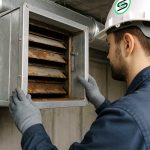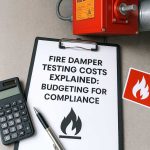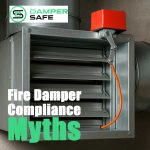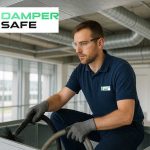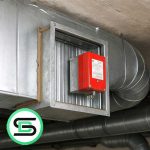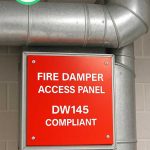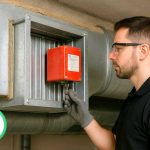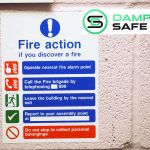Warehouse and Industrial Facility Fire Damper Safety: What You Need to Know
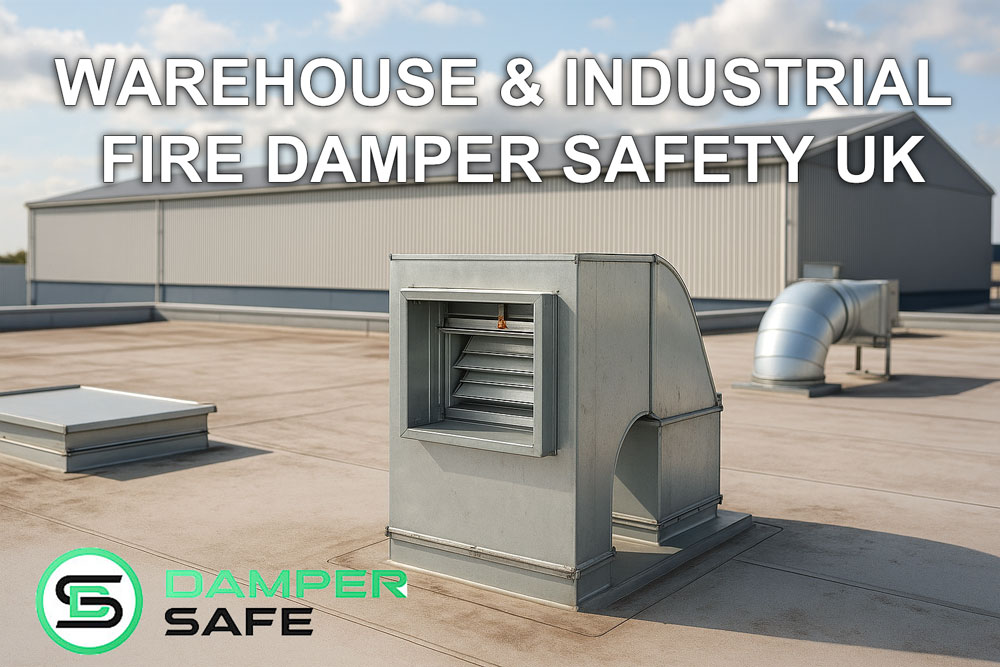
Introduction: Why Industrial Fire Safety Depends on Effective Fire Dampers
In large-scale warehouses and manufacturing plants, the risk of fire spreading rapidly through vast ventilation systems is a serious concern. With high fire loads, extensive ductwork, and heavy machinery, maintaining fire damper safety in industrial facilities is not optional — it’s a legal and operational necessity. When installed, tested, and maintained correctly, fire dampers form a critical line of defence that prevents flames and smoke from travelling through ducts, protecting staff, equipment, and stock.
This article explains why warehouse and industrial facility fire damper safety matters, what challenges these environments face, and how to stay compliant with UK regulations.
The Challenges of Fire Safety in Warehouses and Industrial Facilities
Unlike office blocks or retail environments, industrial facilities face unique fire safety challenges. The nature of their operations — from manufacturing to logistics — increases fire risk in several key ways:
- High Fire Loads: Warehouses often store combustible materials such as packaging, timber, fabrics, or chemicals that accelerate fire spread.
- Extensive Ventilation Networks: Large air handling units and miles of ductwork make it easier for fire and smoke to spread quickly through open systems.
- Machinery and Heat Sources: Welding, heating, and heavy equipment increase ignition risks.
- Complex Layouts: Multi-bay designs, mezzanines, and large ceilings make fire compartmentation and damper accessibility more complex.
Because of these challenges, fire damper safety in industrial and warehouse settings requires a proactive, structured compliance plan rather than reactive maintenance.
How Fire Dampers Protect Industrial Facilities
Fire damper safety revolves around the principle of containment. When heat from a fire reaches a damper, it automatically closes — usually via a fusible link or motorised mechanism — stopping flames and smoke from spreading through ventilation ducts.
In an industrial setting, this function is especially critical because:
- It contains fire within one area, protecting high-value equipment and stock.
- It protects evacuation routes and helps maintain breathable air for longer.
- It reduces downtime and damage, allowing faster recovery after an incident.
Without functional dampers, an industrial fire can travel through ducts and ceiling voids in minutes — putting lives and business continuity at serious risk.
UK Regulations Governing Fire Damper Safety
Warehouse operators and industrial facility managers are legally required to maintain fire damper safety under multiple UK regulations. These include:
- Regulatory Reform (Fire Safety) Order 2005: Requires all “responsible persons” to assess fire risks and maintain systems in working order.
- BS 9999: Provides guidance on fire safety management in industrial and commercial buildings.
- DW145: The industry standard for correct installation and maintenance of fire and smoke dampers.
- BS EN 1366-2: Sets testing criteria for damper fire resistance performance.
Non-compliance can lead to enforcement notices, insurance claim rejections, and even prosecution. That’s why scheduled inspections, detailed reporting, and professional testing are essential for warehouse and industrial facility fire damper safety.
Fire Damper Testing and Maintenance for Industrial Environments
Industrial systems typically require tailored inspection programmes due to their scale and complexity. According to current guidance, all dampers must be tested at least annually by competent professionals — and in high-risk environments, more frequent testing may be recommended.
Key steps to maintain fire damper safety include:
- Creating an asset register of all dampers within the facility.
- Installing proper access panels for safe and efficient inspection.
- Carrying out visual and operational testing to ensure full closure.
- Recording results in compliance documentation for auditing and insurance purposes.
Learn more about testing schedules in our blog How Often Should Fire Dampers Be Tested in the UK?
Cost Considerations and Long-Term Compliance
For large industrial sites, budgeting for testing and remedial works is essential. Costs depend on the number of dampers, their accessibility, and the size of the system. For a detailed breakdown, read our guide on Fire Damper Testing Costs Explained: Budgeting for Compliance.
Planning annual budgets in advance ensures that fire damper safety remains a continuous process — not a one-off task. This approach also minimises downtime and avoids expensive emergency repairs.
How Damper Safe Ltd Supports Industrial Clients
Damper Safe Ltd works closely with warehouse operators, manufacturers, and logistics companies to deliver end-to-end fire damper safety solutions. Our services include:
- Comprehensive testing and inspection programmes across large-scale facilities.
- Installation and maintenance in accordance with DW145 fire damper standards.
- Detailed compliance reporting for insurance and regulatory audits.
- Professional remedial works, including access door installation and replacements.
Our team ensures full traceability and documentation — giving industrial clients peace of mind and a clear audit trail for every fire damper safety action taken.
Conclusion: Fire Damper Safety Is Non-Negotiable
In warehouse and manufacturing environments, fire damper safety is more than a compliance requirement — it’s a vital component of operational resilience. With high fire loads, complex ventilation systems, and critical infrastructure at stake, regular testing and professional maintenance are essential to keeping people and property safe.
To ensure your facility meets current regulations and insurance expectations, contact Damper Safe Ltd today for a professional consultation and compliance review.
For further guidance, refer to the official Health and Safety Executive fire safety guidance for UK workplaces.


